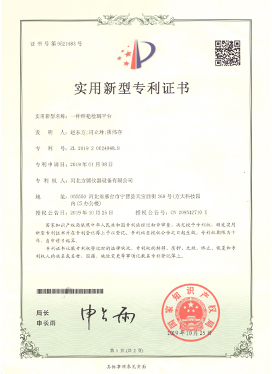clamps for tensile testers
Clamps for Tensile Testers An Essential Component for Accurate Testing
Tensile testing is a fundamental method used to assess the mechanical properties of materials. It involves stretching a specimen until it fails, providing critical data on tensile strength, ductility, and other properties. A key element in this testing process is the clamp, which holds the specimen securely in place during the test. This article explores the importance of clamps in tensile testers, their types, and considerations for selection.
The Role of Clamps in Tensile Testing
Clamps serve as the interface between the testing machine and the specimen. They must grip the material firmly to ensure that the load is transmitted accurately throughout the test. If the clamps fail, slip, or deform during testing, the results can be unreliable, leading to incorrect interpretations of material properties. Thus, selecting the right type of clamp is crucial for the integrity of tensile testing.
Types of Clamps
There are various types of clamps used in tensile testing, each designed for specific applications and materials. Here are some common types
1. Wedge Grips Wedge grips are one of the most popular choices for tensile testing. They operate by using a wedge mechanism to tighten around the specimen as force is applied. This design minimizes slippage and ensures a secure grip. Wedge grips are versatile and can accommodate a wide range of materials, from metals to plastics.
2. Mechanical Grips Mechanical grips use a ratchet or lever mechanism to secure the specimen. They are particularly useful for testing thicker materials or those requiring a more significant grip force. Mechanical clamps are preferred for certain applications where a strong hold is necessary, although they may be less flexible in adjusting to different specimen sizes.
3. Hydraulic Grips Hydraulic clamps use hydraulic pressure to secure the specimen, offering a powerful and uniform grip. These grips are ideal for high-strength materials or large specimens that require substantial holding force. However, hydraulic grips can be more complex and expensive, making them suitable for specialized testing environments.
4. Pneumatic Grips Similar to hydraulic grips, pneumatic clamps utilize air pressure to hold the specimen. They provide quick operation and can be adjusted easily, allowing for faster transitions between tests. Pneumatic grips are often used in scenarios where speed and efficiency are crucial.
clamps for tensile testers

5. Soft Grips Soft grips are designed for materials that are prone to deformation or damage under high pressure. These grips use soft, rubberized surfaces to maintain a secure hold without damaging the specimen. They are particularly useful for testing polymers or composites, which may undergo significant changes in shape.
Considerations for Selecting Clamps
When selecting the appropriate clamps for tensile testing, several factors must be taken into account
- Material Type Different materials have different mechanical properties. The clamps must be able to handle the specific material being tested, considering its tensile strength and ductility.
- Specimen Size The dimensions of the specimen will dictate the size and type of clamps required. Ensuring a proper fit is essential to avoid slippage.
- Testing Environment Some applications may involve elevated temperatures or corrosive environments. In such cases, selecting corrosion-resistant or high-temperature clamps is crucial.
- Test Speed The speed of the tensile test may also affect the choice of clamps. For fast testing applications, pneumatic grips may be more suitable, while more extensive, slower tests might benefit from robust mechanical grips.
Conclusion
In summary, clamps are a vital component of tensile testers, influencing the accuracy and reliability of the testing process. Choosing the right type of clamp depends on various factors, including the material being tested, specimen size, and specific test conditions. By carefully considering these aspects, engineers and technicians can ensure that their tensile testing results are both accurate and meaningful, ultimately leading to better material selection and performance in real-world applications. Understanding the different types of clamps and their specific applications can greatly enhance the tensile testing experience, driving improvements in product development and material science.
-
Reliable Performance Testing with Advanced Aging Chamber Solutions
NewsAug.23,2025
-
Advancing Precision with Profile Projector Technology
NewsAug.23,2025
-
UV-LED Ultraviolet Crosslinking Technology: Innovation and Prospects
NewsAug.23,2025
-
Ensuring Safety and Compliance
NewsAug.23,2025
-
Electrical Properties Testing in Modern Applications
NewsAug.23,2025
-
Universal Tensile Testing Machine Applications in Modern Electrical and Material Testing
NewsAug.23,2025
 Copyright © 2025 Hebei Fangyuan Instrument & Equipment Co.,Ltd. All Rights Reserved. Sitemap | Privacy Policy
Copyright © 2025 Hebei Fangyuan Instrument & Equipment Co.,Ltd. All Rights Reserved. Sitemap | Privacy Policy

